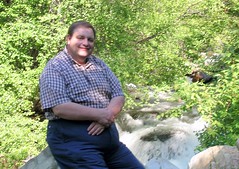I first started paying attention to pop music in about 1971. I was in the 8th grade at the time. Prior to that, I listened to what my parents did – which was quiet, easy listening music. I remember listening to dad’s Western music (Sons of the Pioneers). I also remember listening to patriotic music, such as John Phillip Sousa marches, and the Ballad of the Green Beret. However, the records I remember playing the most were dad’s Tijuana Brass Albums (The Lonely Bull, Going Places, and Whipped Cream and Other Delights). I remember playing those records over and over again. I’m sure we wore them out.
The first record I remember buying for myself was an album of Piano music from Peter Nero. It had his arrangements of movie theme songs on it. It wasn’t much different from what my parents listened to. My next purchase was the Carpenters’ Tan album, which featured the song, “Rainy Days and Mondays”. I tended to like music with strong melodies, and sweet harmonies, which I found in the Carpenters, Simon and Garfunkel, and similar artists of the day.
Over the years, my musical tastes diverged, into more mainstream pop music, though not much into heavy metal, or really hard rock. Later I would branch into Jazz, Classical, and dabble in Country Music.
If you are like me, you may have lots of old LP records, on good old vinyl – refugees from the 70’s and 80’s. At some point in the mid to late 1980’s, I switched over to CD’s. For a while, when CD’s were first gaining popularity, I still bought music in LP form, because an LP was about ½ the price of a CD. However, I would use the LP’s as master copies. I would only play them once – and then only to record them on high quality cassette tapes. Then if the tape wore out, or was lost or destroyed, I could play the record again, and make a new tape. Finally, LP’s began to disappear altogether from the shelves of the “record” stores. Only then, of necessity, did I convert to CD’s.
After I bought my first CD player, I bought a few CD’s of my old favorites that I had previously purchased on LP records. Of course, all new music was purchased on CD’s. By this time I had over 100 LP’s in my collection, and I couldn’t afford to buy CD’s of them all. In fact, in the earlier days of CD’s not all of the older records were even available on CD’s. Nowadays most every popular record has been re-released as a CD, and can be purchased from some of the larger on-line music distributors, such as Amazon.com, or BMG music. However, even now, it is not cost effective to go back and re-purchase all of your old LP’s in CD form.
Digital music is now the big thing in recorded music. Most of the time, you still want to have a CD hard copy of the music, that you can play on a home or car stereo. However, with the popularity of the iPod, and other portable music players, digital music is gaining more and more popularity.
The early days of digital music were pioneered by Napster, and other file sharing web sites. The problem with this was the great opposition of the record companies, because people were sharing copyrighted material without any compensation to those who either performed or produced the music. After a long series of legal battles, the free music file-sharing sites have either been shut down, or severely restricted.
In comes Steve Jobs, and Apple computer. They have been innovative on two fronts. First, they came up with the iPod, which is the granddaddy of all portable digital music players (and still holds about 90% of the market share). Secondly, the came up with the iTunes digital Juke Box, which can be run by windows based computers. Also iTunes includes a digital music store, where customers can purchase a single song (for 99¢) or an entire album (usually for about $9.99). After downloading, the customer can then download the music to their iPod, as well as make an Audio CD copy of the music, which can then be played on any CD player. Also, if you have music already on a CD, you can import it into your iTunes jukebox, and then download it to your iPod. The iTunes jukebox also allows you to play your music on your computer as well, without having to inset CD’s. You can mix and match music into your own albums, or groups of albums. I have groups for 70’s music, 80’s music, Jazz, Classical, etc. Then you can have this music played in random order. It’s like having your own FM radio station, which only plays the songs you want to hear – with no commercials. Other music companies have similar jukeboxes, and portable music combinations, such as Sony Music, and Real Player. Microsoft has its version with Windows Media Player, as well.
As on-line music stores gain in popularity, I would not be surprised to find more music eventually distributed legally over the Internet. Even now, there are some artists who are self-producing and self-publishing their own music, and distributing it only on the Internet through their own web sites, bypassing the music companies and retail stores altogether. Over time, I would not be surprised to see more and more artist direct to consumer marketing of music in this form.
The question for those of us over 40 then becomes, what the heck do we do with all of those old LP’s? That, my friends, will be the topic of my next post.
Friday, February 18, 2005
Subscribe to:
Post Comments (Atom)


No comments:
Post a Comment